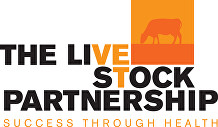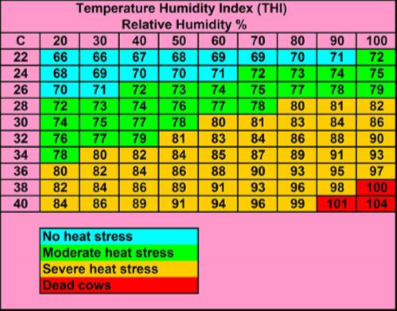As the climate changes in the UK its worth considering the impact of heat stress on cattle in particular dairy cattle. Heat stress occurs when the environmental temperature humidity index >70; something that currently doesn’t happen very often but potentially could become more of an issue in the next few years.
Heat stress causes a number of visible and non-visible changes in cattle having a big impact on the health and welfare of the cows:
Visible changes include:
· Increased RR
· Reduced rumination
· Reduced feed intake
· Increased rectal temp
· Increased SCC
· Reduced milk production, can be up to 10-15%, estimated to cost £35/cow/yr
Increased days open
Non-visible changes include
· Increased energy required for maintenance of normal body temperature
· Impaired rumen balance and function leading to an increased acidosis risk
· Oxidative stress leading to depression of the immune system making cows more susceptible to disease
· Decreased conception rate by up to 50% depending on the level of heat stress, estimated cost £10/cow/yr
· Mastitis/ health problems, mortality estimated to cost £2/cow/yr. Increased temperatures and humidity lead to higher bacterial growth and having excess water can lead to increased cases of diseases
Decreased feed efficiency by up to 10-15%
Heat stress can be reduced by actively cooling cattle to reduce the overall body temperature as well as feed management changes to ensure adequate nutrition. Active cooling is usually achieved by using a combination of increasing ventilation, promoting air flow or water-cooling systems. These are especially important for areas where cattle tend to group i.e collecting yard or loafing areas. What can you do on your units to reduce the impact of heat stress?
Get in touch to find out more about how we can help you

